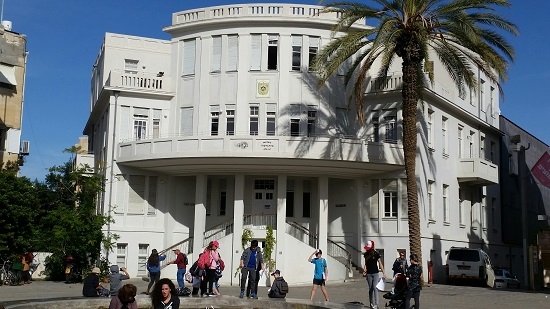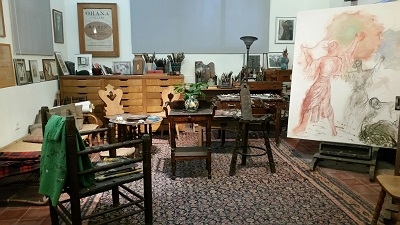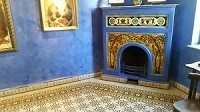One Street, But Lots of History
On a lovely winter morning we met up with Cecily Hanson at Arlosoroff train station for our day's outing through ESRA's auspices to Bialik Street in Tel Aviv where we were to visit three landmarks. As an old-timer in Israel it always amazes me how little I know of our wonderful country.
We started off at Bialik House. Our guide, an expert on Bialik and his history, told us about Hayim Nahman Bialik, a Jewish poet born in 1873 in Russia. He came to Tel Aviv in 1924, but all his poems were in Hebrew or Yiddish. He was ultimately recognized as Israel's national poet. Bialik died in 1934.
The house was built by Bialik himself and is today a museum, well worth a visit just for its design and architecture.
Our second visit was to the first City Hall of Tel Aviv in Bialik Street. It was built in 1924 as a hotel and is a very beautiful building.Within a year the then Mayor of Tel Aviv, Meir Dizengoff, decided to make the building the City Hall, at first renting it and then buying it in 1928. We visited the chamber where all the important work was done, and could really feel the atmosphere of those old days. The building was used as the municipality until 1965 when it was moved to its present quarters in Ibn Gvirol Street. Today it is a museum and Tel Aviv center, vibrant with life and urban culture with new exhibitions being shown every six months.
We took our lunch break in Allenby Street not far away, choosing any eatery that suited our palate.
We then met at the Rubin Museum also in Bialik Street. To me this was the highlight of our day. Our guide's descriptions of Rubin's paintings were excellent and gave such an alive feeling of all the years that Rubin spent depicting the local landscapes and the people, Arabs and Jews alike, reflecting the Zionist enthusiasm of those early years. Reuven Rubin (nee Zelicovici) was born in 1893 in Romania. He painted from childhood and came to Jerusalem in 1912 to study at the Bezalel Art Academy. He continued his studies in Paris, followed by America after WW1. In 1923 he returned to Palestine. He lived with his family on Bialik Street from 1946 until his death in 1974.
The house has four floors. The basement is a children's workshop, while the next two floors both have a magnificent collection of his paintings donated, as is the building, to the city of Tel Aviv. His workroom which is preserved as it was in those days gives a wonderful feeling of the man himself. There are also on display changing guest selections, but we had a real insight of the man and painter by our excellent guide.
The success of any outing of this nature is made by the expertize of the guide. All three places we visited were made alive and vibrant by the descriptions of the competent guides.
And so ended a magnificent day of back to a beautiful street of old Tel Aviv.











Comments